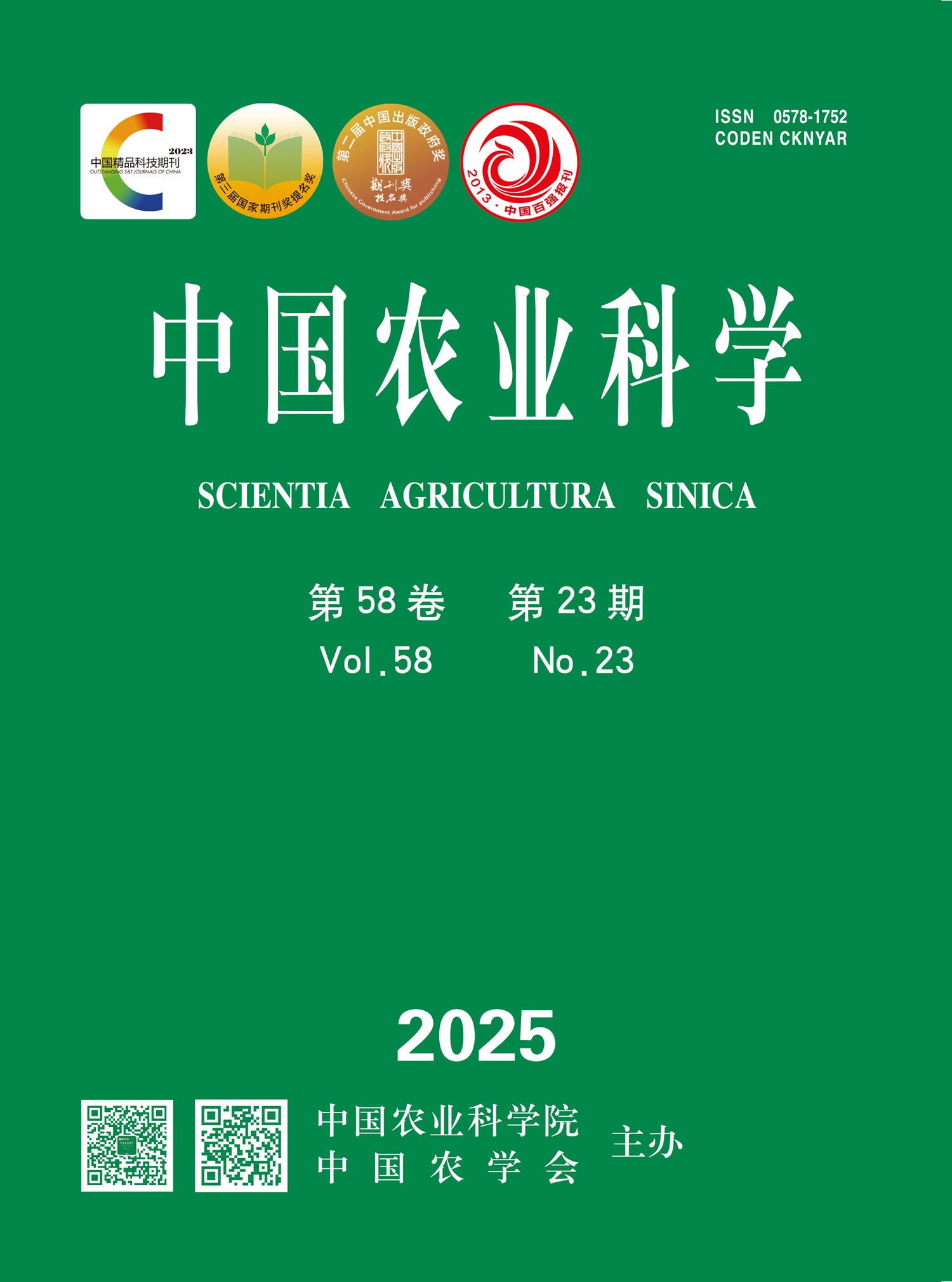【Objective】 This study aimed to investigate the effects of different row ratio configurations on canopy light distribution, layer-specific photosynthesis, and crop yield formation in a maize-soybean strip intercropping system, thereby providing a theoretical basis for high-yield and high-light-efficiency cultivation. 【Method】 A field experiment was conducted under field conditions during the 2023-2024 growing seasons, with monoculture maize (SM) and monoculture soybean (SS) serving as controls. Four maize-soybean strip intercropping configurations were established: four rows of maize with six rows of soybean (4M6S), four rows of maize with four rows of soybean (4M4S), three rows of maize with four rows of soybean (3M4S), and two rows of maize with four rows of soybean (2M4S). The planting density of maize was consistently maintained at 67 500 plants/hm2 across all intercropping treatments. The soybean planting densities under SS, 4M6S, 4M4S, 3M4S, and 2M4S treatments were 160 000, 153 144, 128 351, 151 068, and 183 556 plants/hm2, respectively, and the effects of different row ratios on the light distribution, photosynthetic performance and yield in the canopy of the composite population were analyzed. 【Result】 The 4M4S treatment resulted in a higher leaf area index (LAI) and greater light transmittance in the middle canopy layer in maize. The LAI under 4M4S was 4.07%, 4.41%, 4.71%, and 5.46% higher than that under 4M6S, 3M4S, 2M4S, and SM, respectively. At the R1 stage, the light transmittance at the ear leaf of maize under 4M4S was 9.76%, 21.11%, 46.83%, and 48.16% higher than that under SM, 2M4S, 4M6S, and 3M4S, respectively. Concurrently, the 4M4S treatment enhanced the net photosynthetic rate of the lower leaves in maize, which was 10.45% and 8.58% higher than that under 3M4S and 4M6S, respectively. The overall radiation use efficiency (RUE) under 4M4S was 1.38%, 6.69%, and 8.01% higher than that under 4M6S, 3M4S, and 2M4S, respectively, demonstrating a stronger photosynthetic capacity under this treatment. The 4M4S treatment achieved the highest yields for both maize and soybean. The two-year average maize yields for 4M6S, 4M4S, 3M4S, and 2M4S were 8.88, 9.22, 8.44, and 8.86 t·hm-2, respectively, while the corresponding soybean yields were 1.44, 1.44, 1.37, and 1.29 t·hm-2, respectively. The land equivalent ratio (LER) for all intercropping patterns exceeded 1.27. Row ratio configuration significantly influenced interspecific relationships between maize and soybean. The aggressivity of maize relative to soybean under 3M4S, 4M6S, and 2M4S treatment was 3.91, 4.41, and 11.32 times that under 4M4S treatment, respectively. In 2023, the relative crowding coefficient was the smallest under 3M4S, followed by 4M4S; in 2024, the value for 4M4S was 3.19%, 10.58%, and 21.82% lower than that under 3M4S, 4M6S, and 2M4S, respectively. Thus, the 4M4S treatment effectively ensured maize yield while simultaneously increasing soybean production. 【Conclusion】 The 4M4S treatment enhanced maize light interception, thereby improving light transmittance within the middle and lower canopy layers of the maize population. This configuration enabled leaves across different canopy positions—both inner and outer rows—to maintain high photosynthetic capacity, while also preserving the photosynthetic performance of soybean plants. Consequently, the system's radiation use efficiency was significantly improved, and both crop yield and land equivalent ratio were markedly increased. Furthermore, this treatment resulted in the smallest values for interspecific competitiveness, relative crowding coefficient, and net effect among all configurations. Therefore, the 4M4S treatment was identified as the most suitable row ratio configuration under the experimental conditions.









